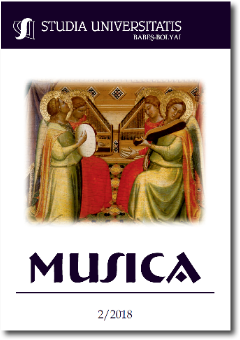HAUNTING SOUNDSCAPES OF TRANSYLVANIA: LIGETI’S RESEARCH STAY AT THE FOLKLORE INSTITUTE IN BUCHAREST
HAUNTING SOUNDSCAPES OF TRANSYLVANIA: LIGETI’S RESEARCH STAY AT THE FOLKLORE INSTITUTE IN BUCHAREST
Author(s): Bianca Ţiplea TemeşSubject(s): Fine Arts / Performing Arts
Published by: Studia Universitatis Babes-Bolyai
Keywords: Ligeti; Enescu; Romanian folk music; Iron Curtain; Bucharest; Transylvania;
Summary/Abstract: Ligeti’s visit to the Folklore Institute in Bucharest in 1949/50 was a brief but defining episode of his youth, and one which proved to have a strong impact on his work. As one of the least explored stages of his early development, this Romanian research stay provided the composer with an entirely new set of ideas which were later manifested in his works, first as direct citations (Baladă și joc, Romanian Concerto, Musica ricercata, Bagatelles for Wind Quintet), and then as distant, barely discernible echoes (Piano Concerto, Violin Concerto, Hamburgisches Konzert). According to Ligeti’s own comments and manuscript sketches (held at the Paul Sacher archives), he derived and developed some of his most original compositional techniques from folk genres such as colinda, hora lungă, bucium signals and bocet originating in Transylvania, Banat and Muntenia, music he heard in various villages of the Carpathian region, and on wax cylinders in Bucharest. In order to show the long-term impact of Romanian folklore on his music the approach will capture two images of Ligeti on either side of the Iron Curtain: first it will explore how he managed, without political compromise, to avoid falling foul of the rules of the communist regime on the use of ethnic elements in the new ideology aesthetics and then how he turned this source of inspiration into a uniquely modern idiom after relocating to the west. Employing Romanian folk elements while in eastern and, later, in western Europe, Ligeti allows the listener to perceive the diverse multi-ethnic roots of his music, which pervaded his inspiration and generated a unique sound world.
Journal: Studia Universitatis Babes-Bolyai - Musica
- Issue Year: 63/2018
- Issue No: 2
- Page Range: 311-326
- Page Count: 16
- Language: English

